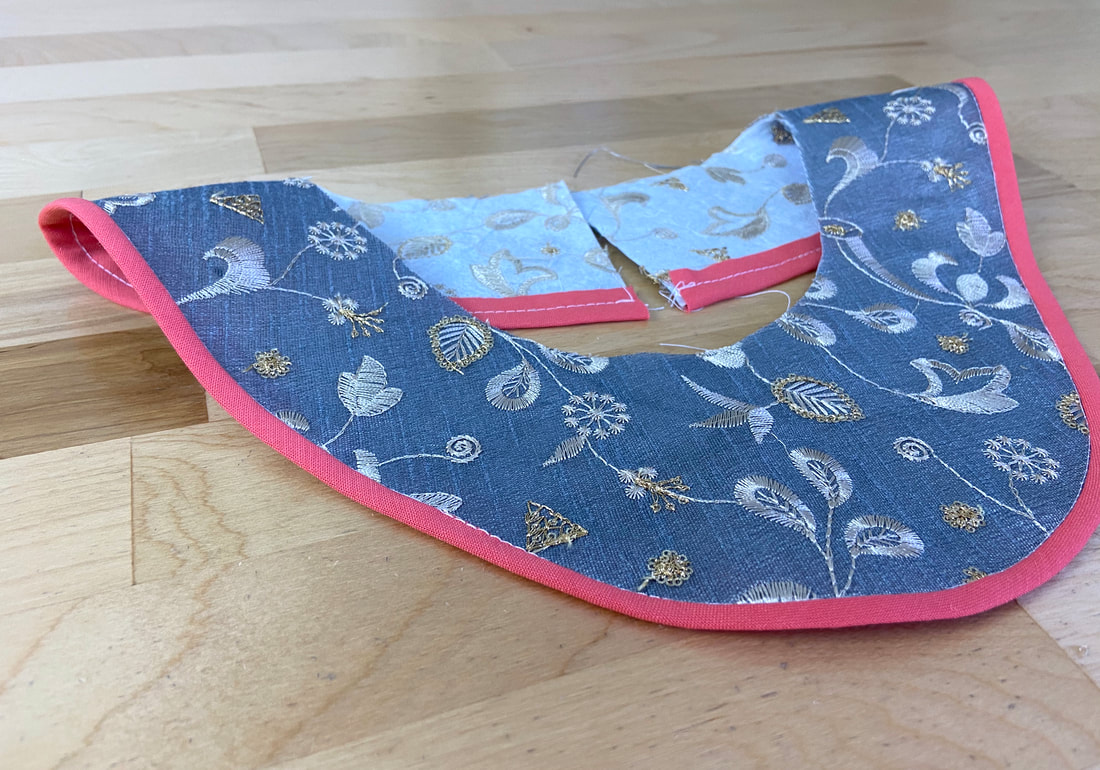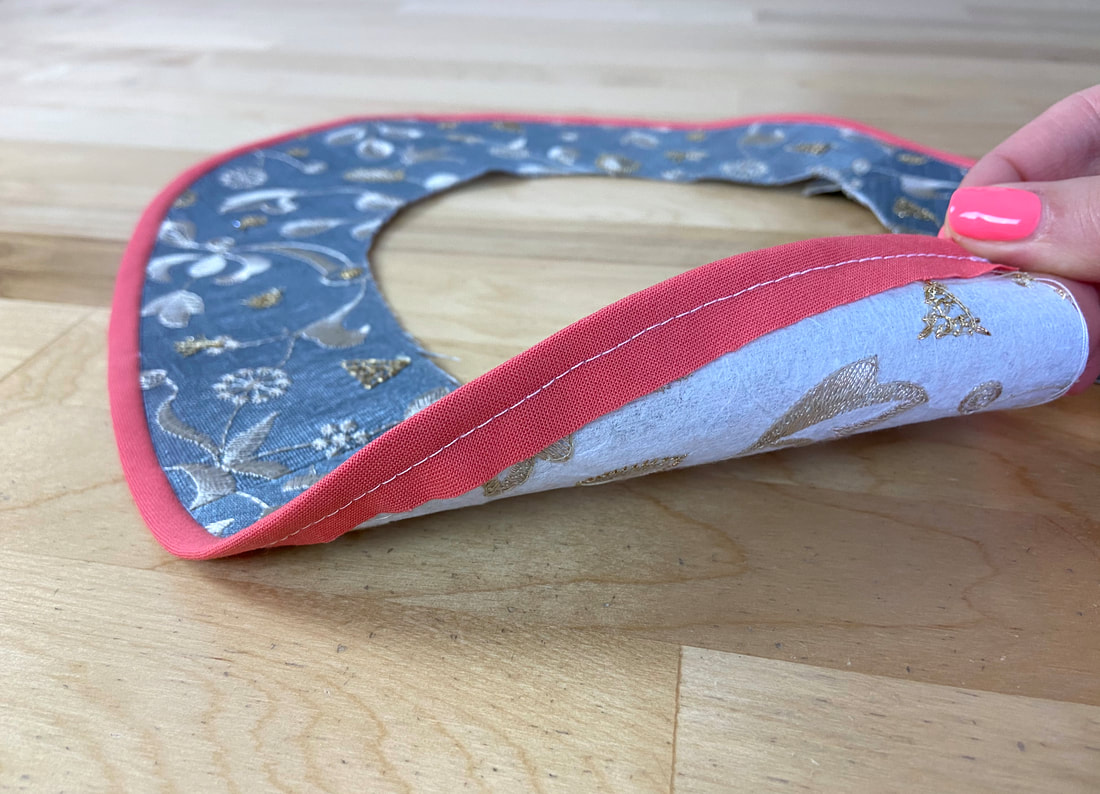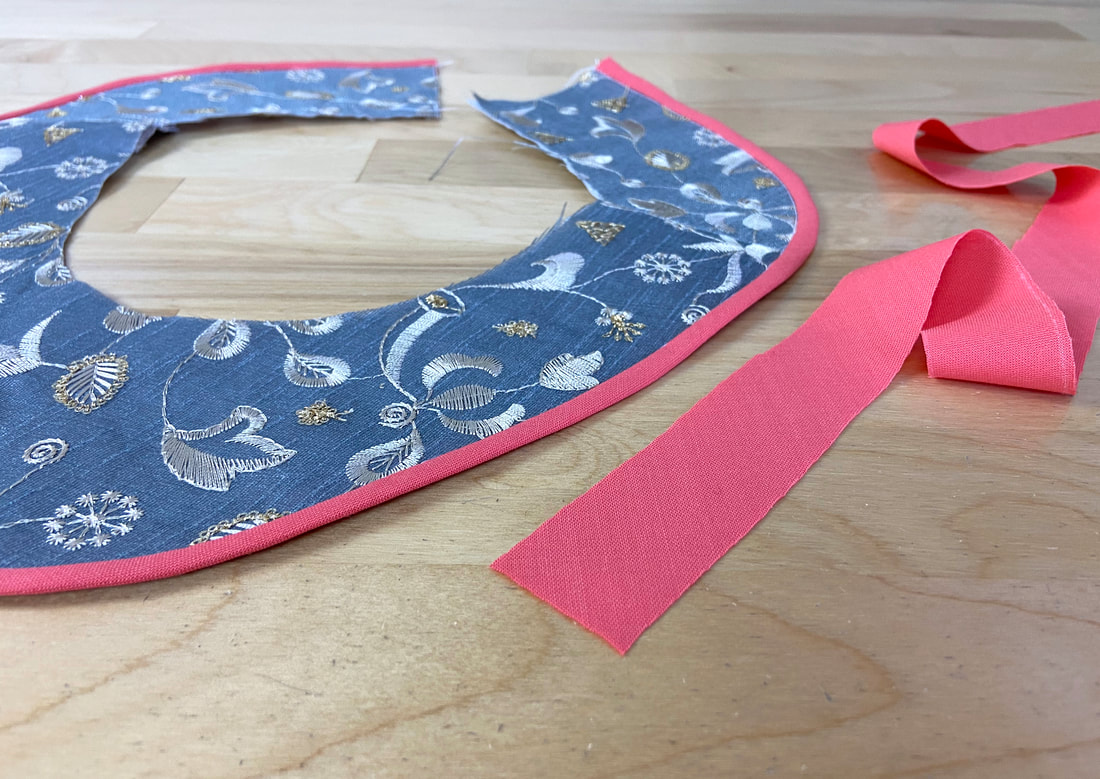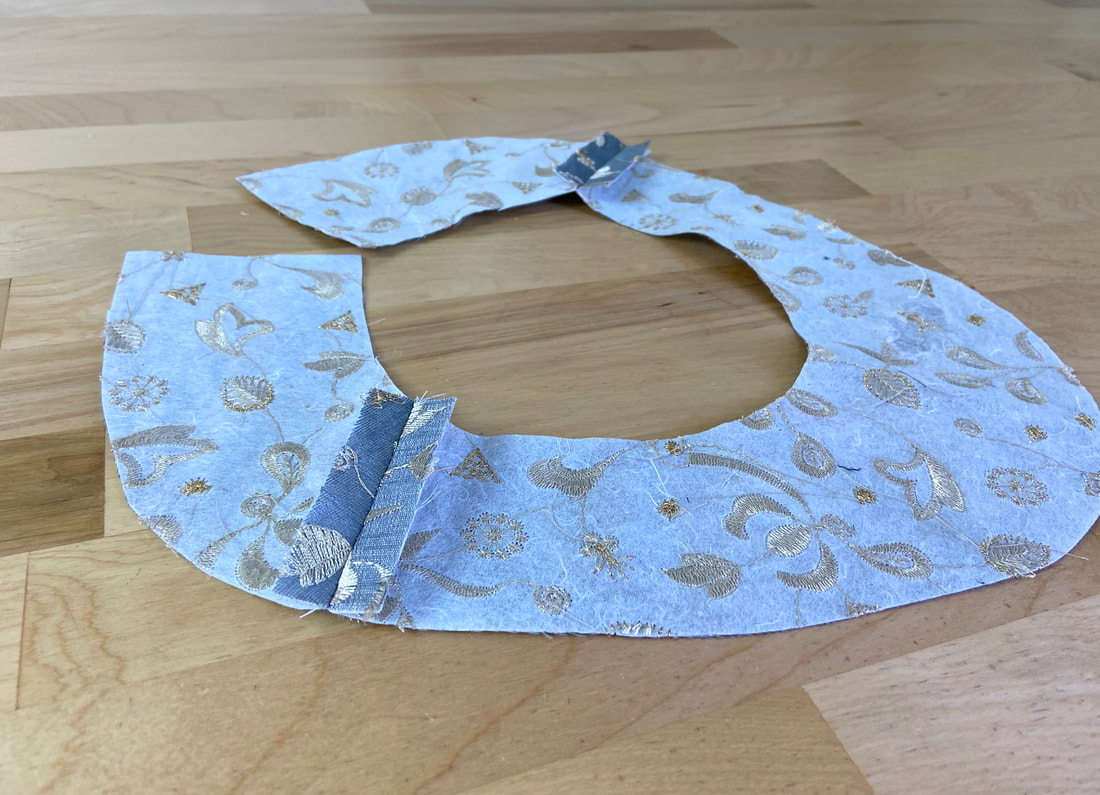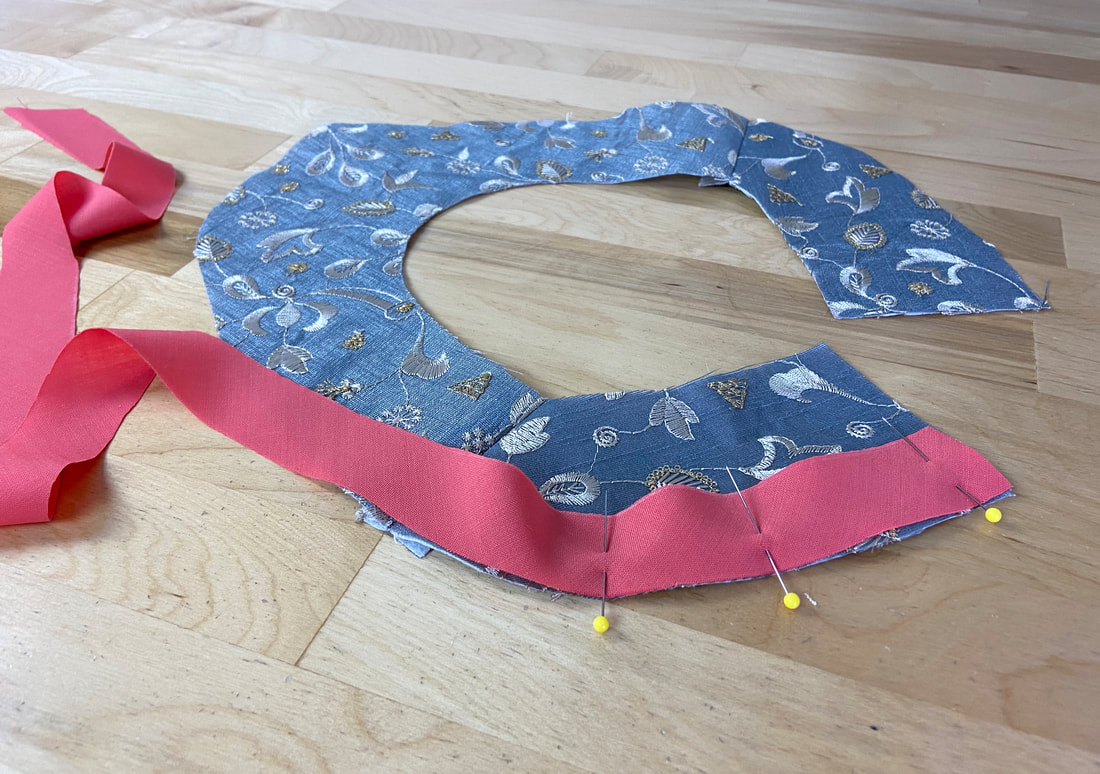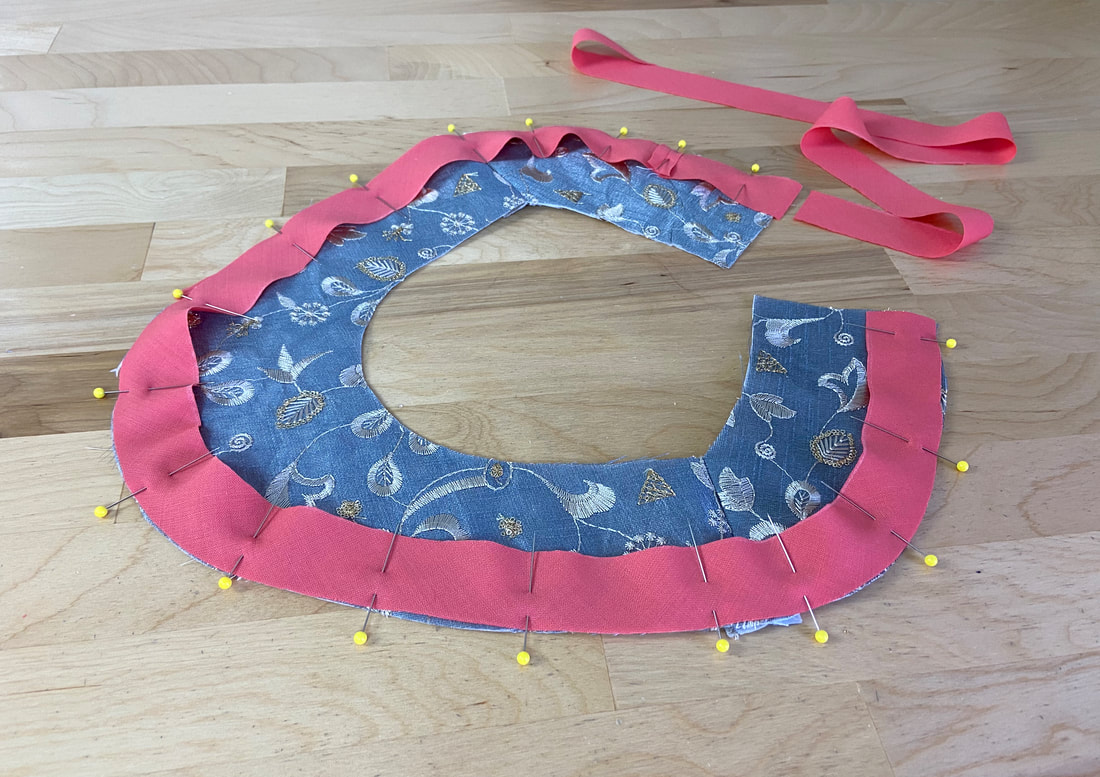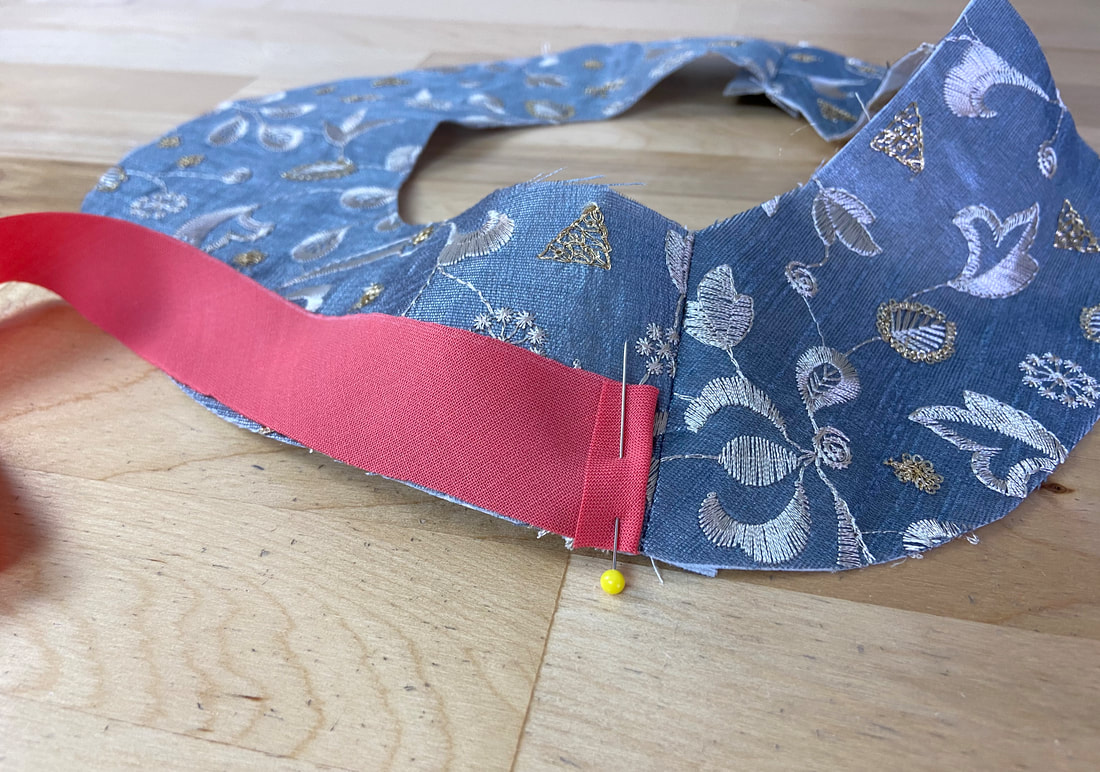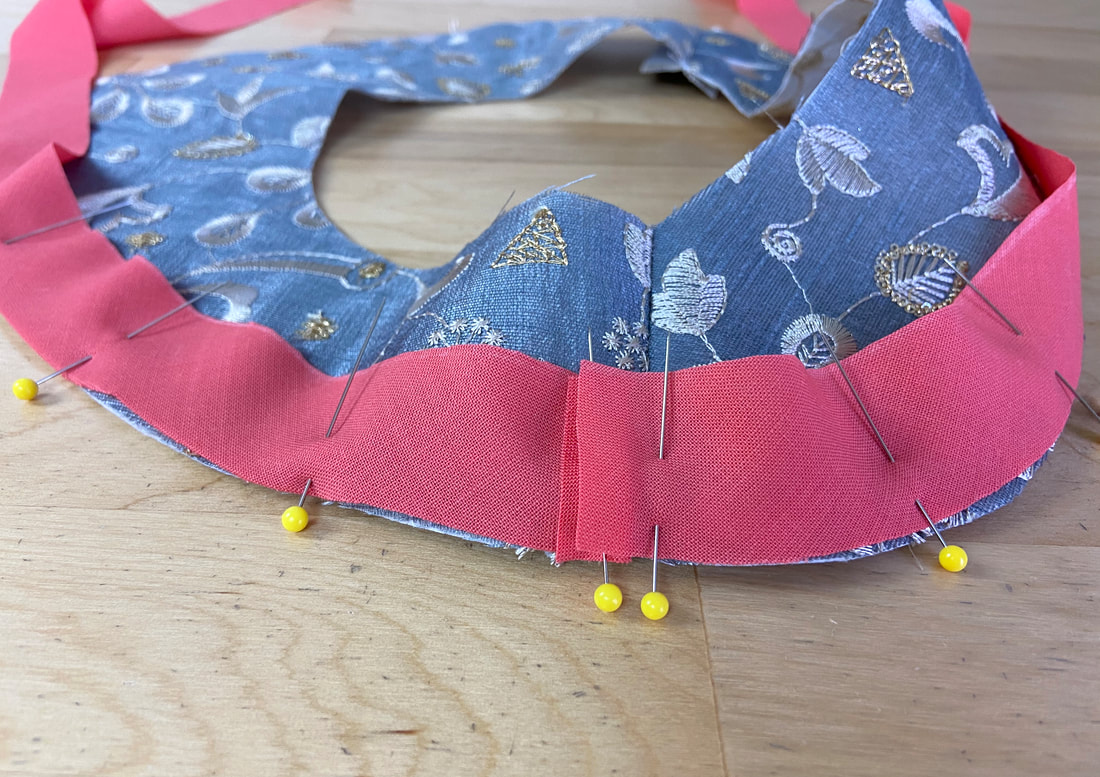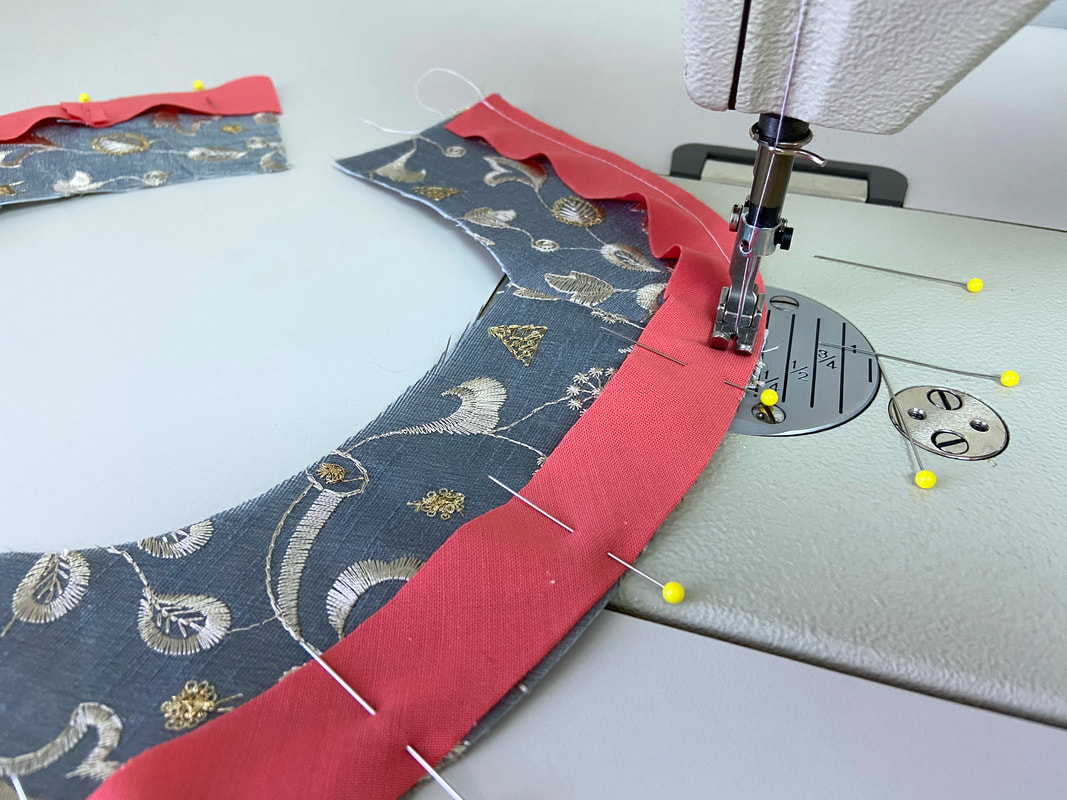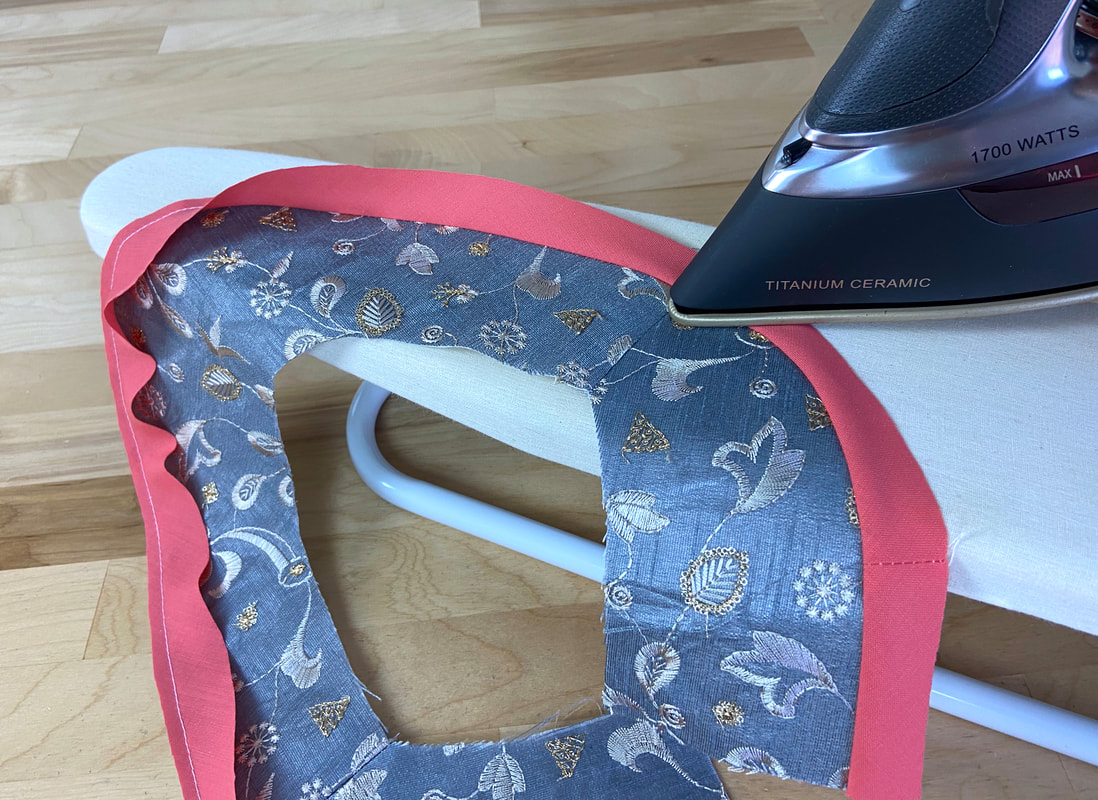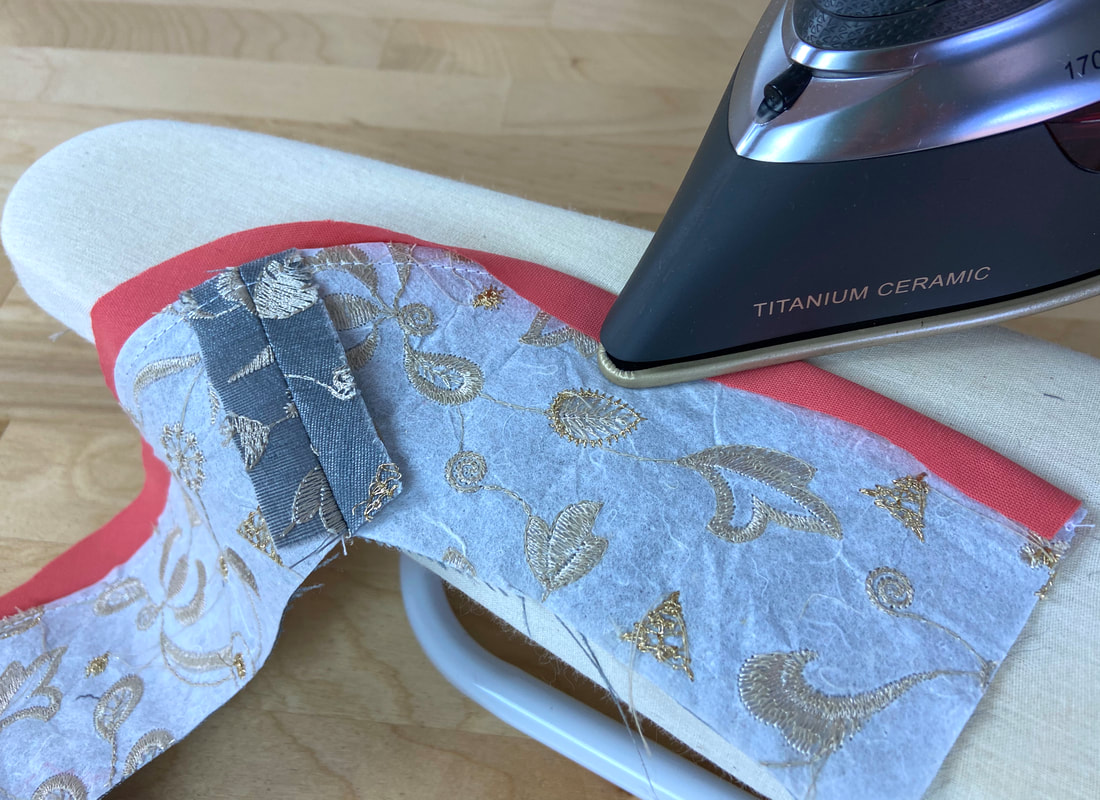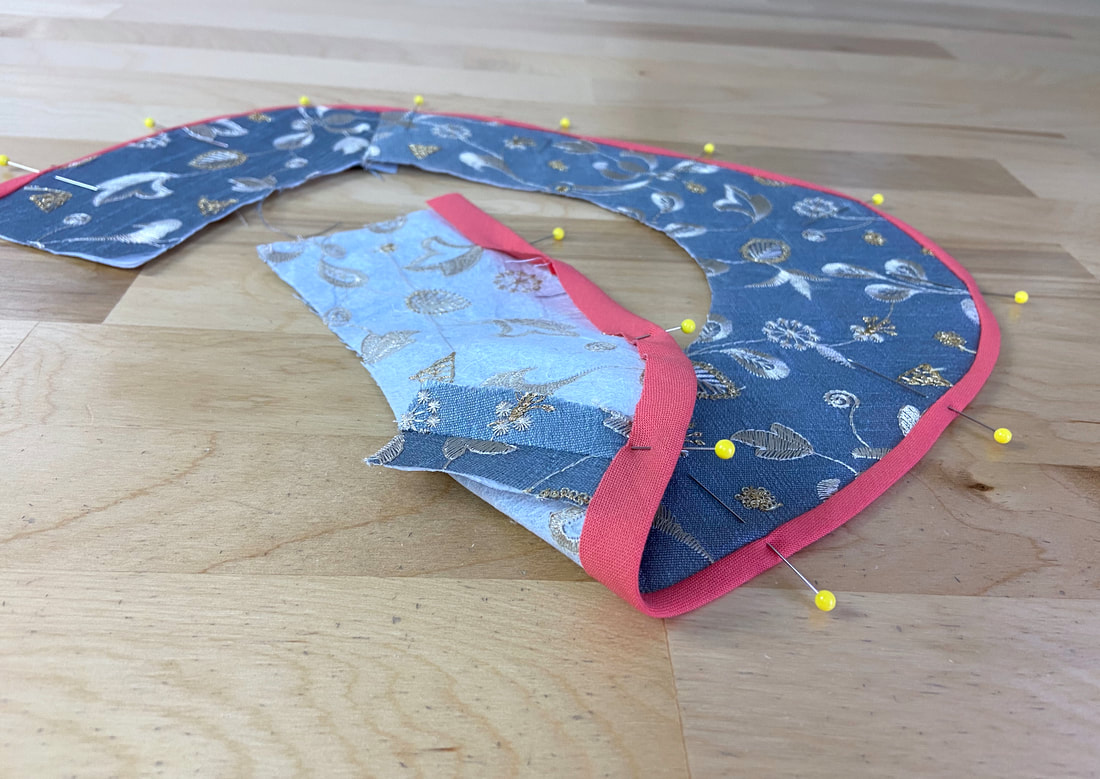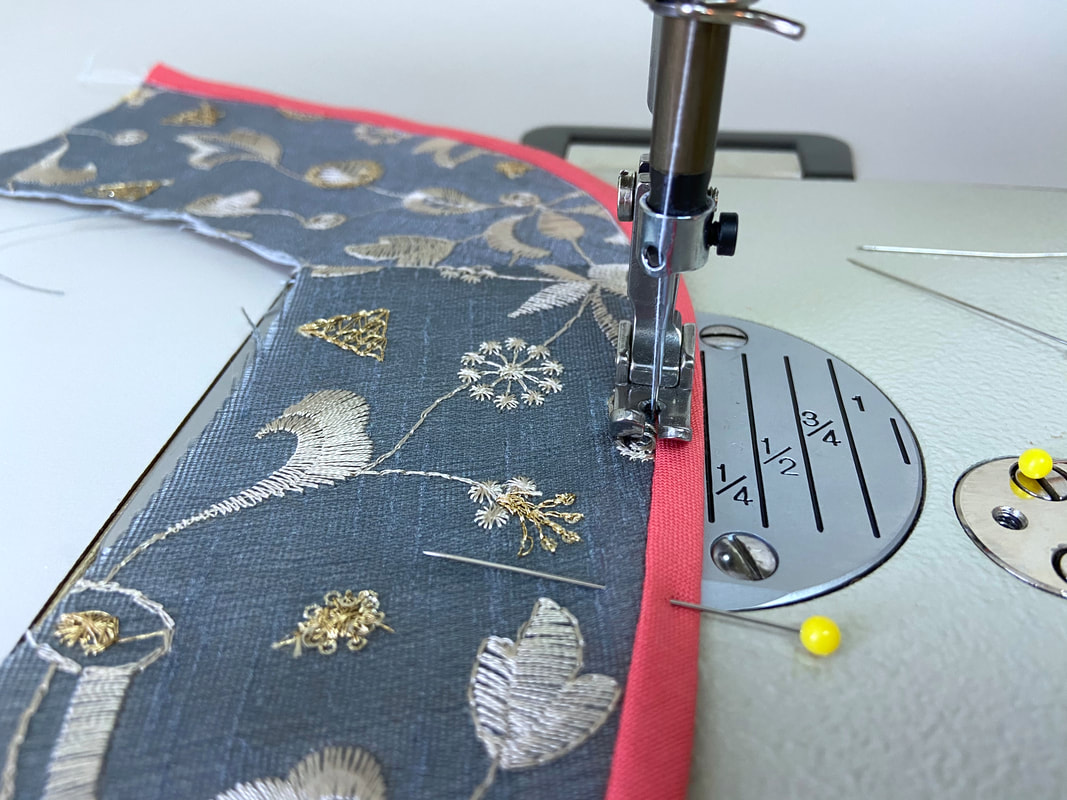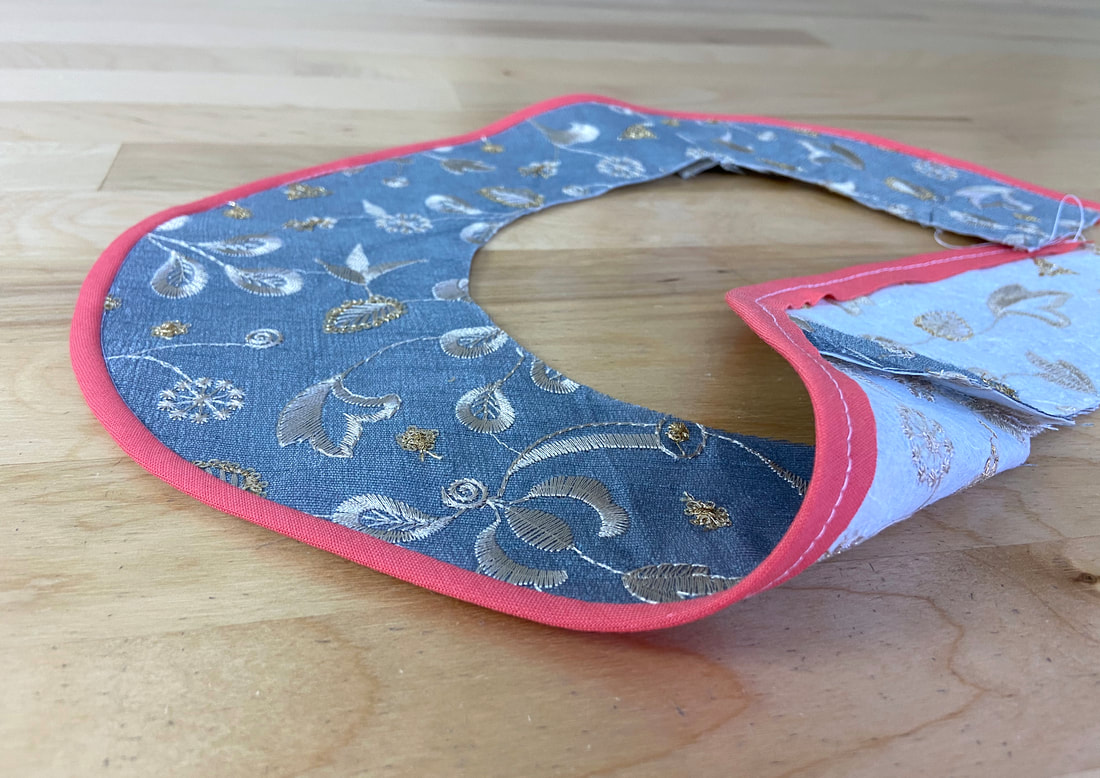In terms of appearance, a Hong Kong finish is almost identiacl to a bound application. Similar to a binding finish, the Hong Kong method uses a bias fabric strip to clean finish the facing’s raw edge.
A Hong Kong finish is much easier/faster to apply and does not require pre-folding of the bias strip. Another benefit to using this finish is that the edge lays much flatter than a conventional double-fold binding application. For best results, the bias fabric strip should be cut from a lining or lightweight material.
To complete the Hong Kong application, the bias fabric strip is cut at least four (4) times the width of the finished application. In addition, it should be long enough to cover the length of the facing plus some added excess of at least 1-2 inches.
In the example outlined below, the bias fabric strip is cut at a 1” width. That means the finished folded application will be 1/4” wide.
1. Sew and clean-finish (if needed) all facing seams prior to completing the Hong Kong application.
2. Align the end of the bias strip with the seam edge and pin along the facing's outer edge to secure.
3. Continue pinning until you arrive at the other seam edge and trim the bias strip excess as shown.
If the facing edge is closed:
Fold one end of the bias strip at 1/4”, and align it with one of the facing seams. Align the strip's lengthwise edge to that of the facing, with fabric face sides touching as shown.
Continue pinning as you align the fabric strip along the entire facing edge. When arriving at the folded end, overlap the fabric strip by 1/2” and trim the excess.
4. Stitch the bias strip to the facing edge at 1/4” seam allowance.
5. Fold the bias strip over the raw facing edge (towards the facing’s wrong side) as shown and iron the folded fabric strip in this position.
6. For added stability in the machine stitching process, pin the folded bias strip perpendicular to the edge as shown.
7. From the facing's right side, stitch directly into the groove formed by the seamline, catching the other bias edge underneath.
8. As a final step, iron the finished Hong Kong application.
When to use: A Hong Kong application works best with medium and heavier fabrics. Similar to binding, this is a great finish for open-front garments that have an exposed wrong side. Needless to say, it is a much faster alternative to binding.

